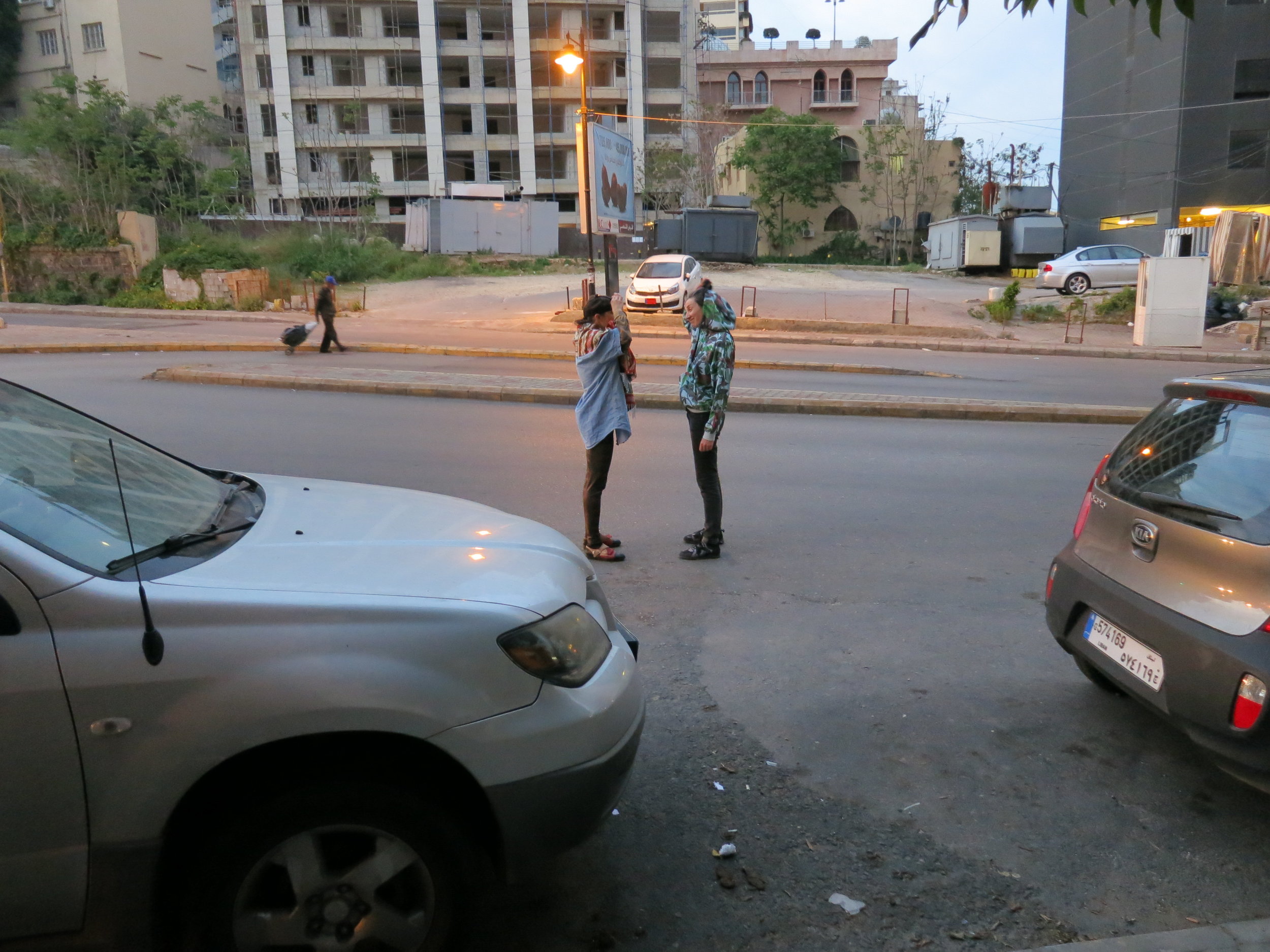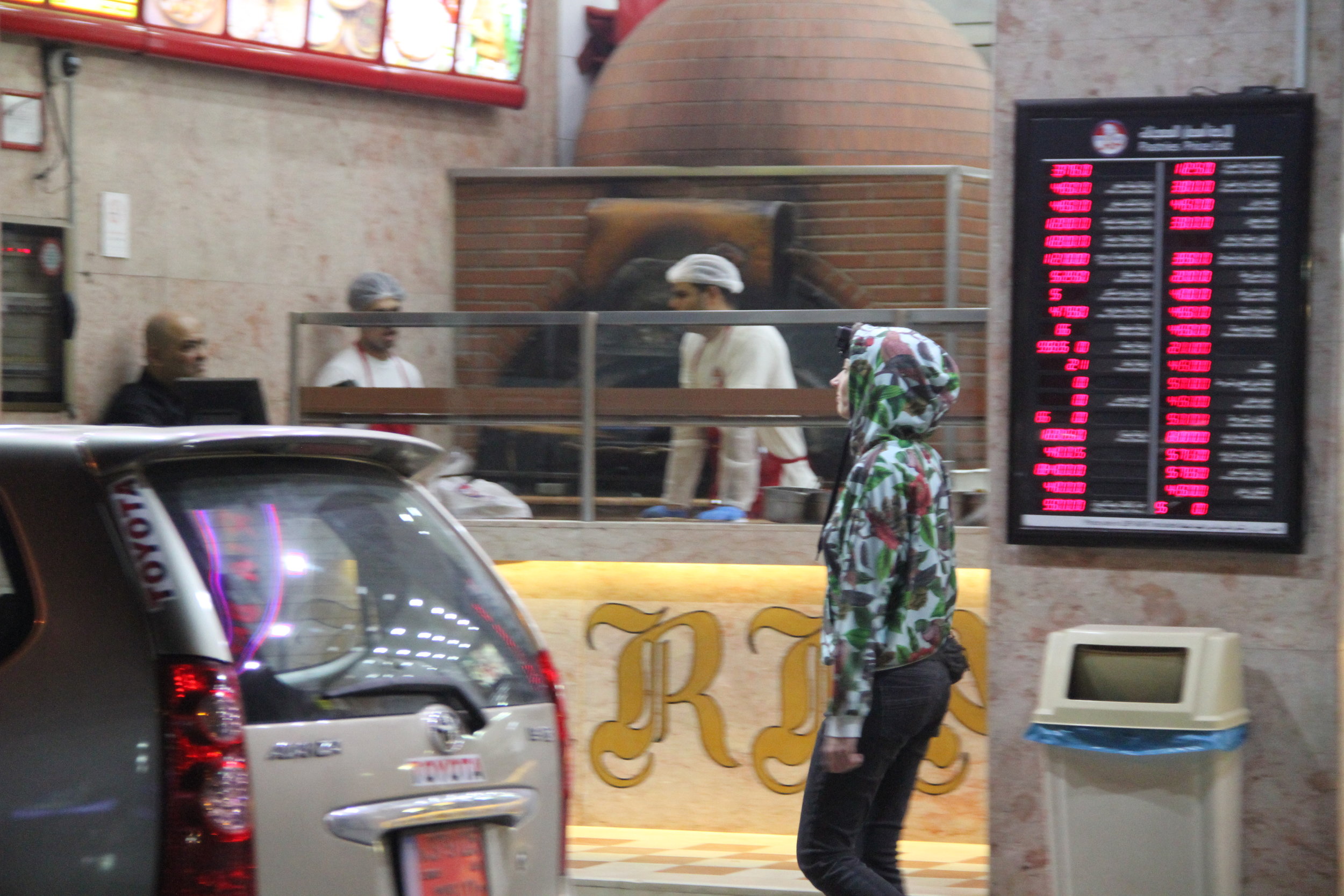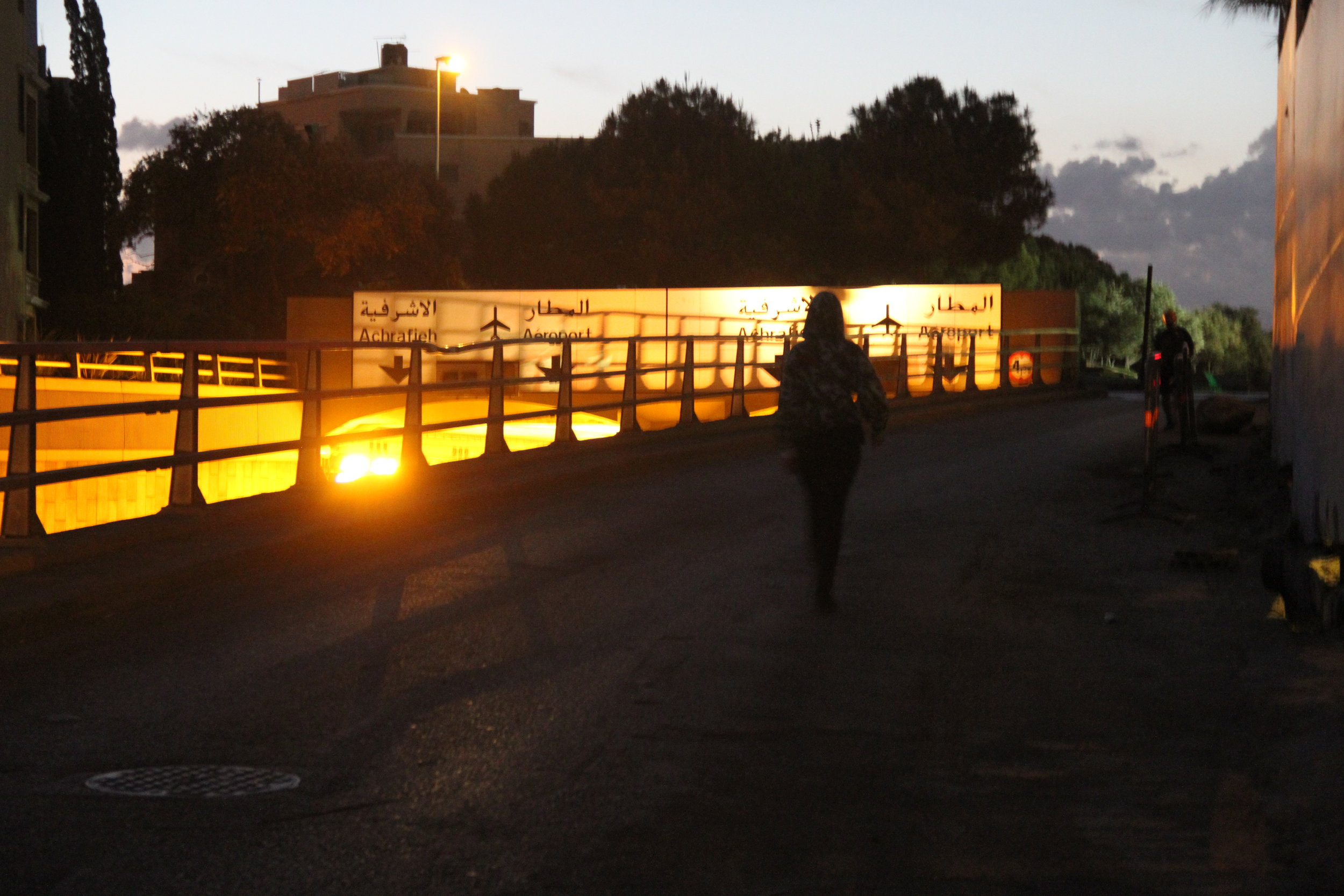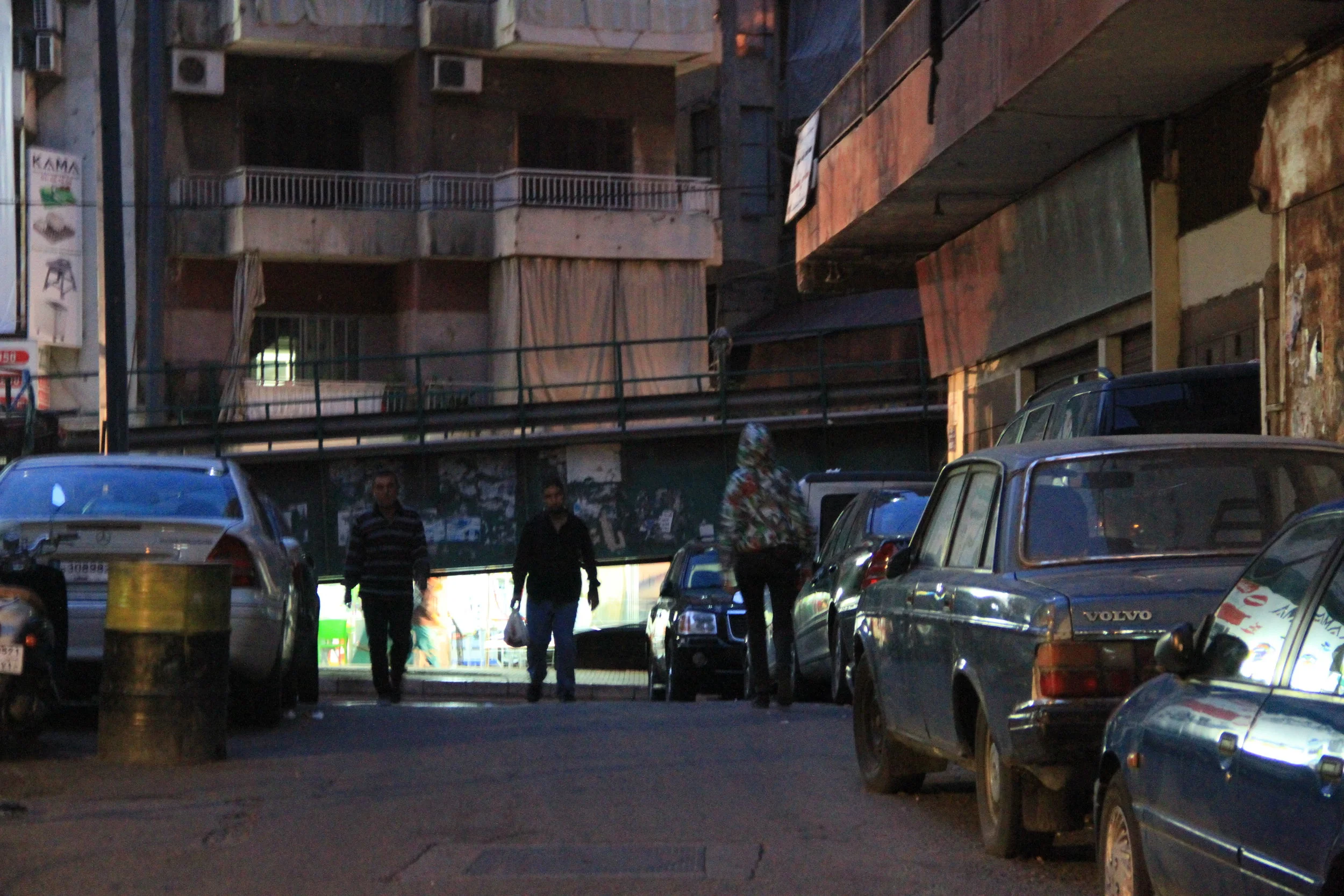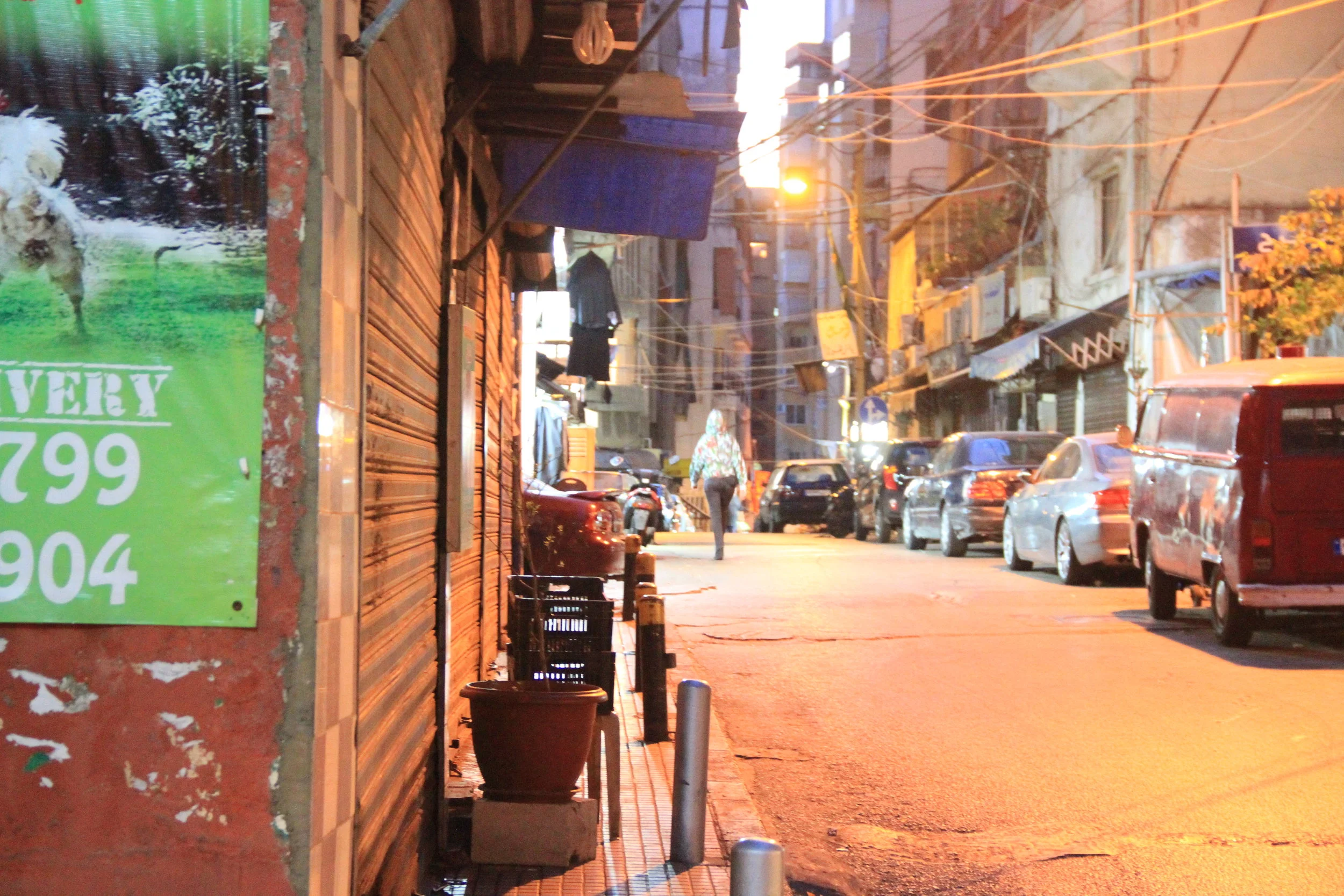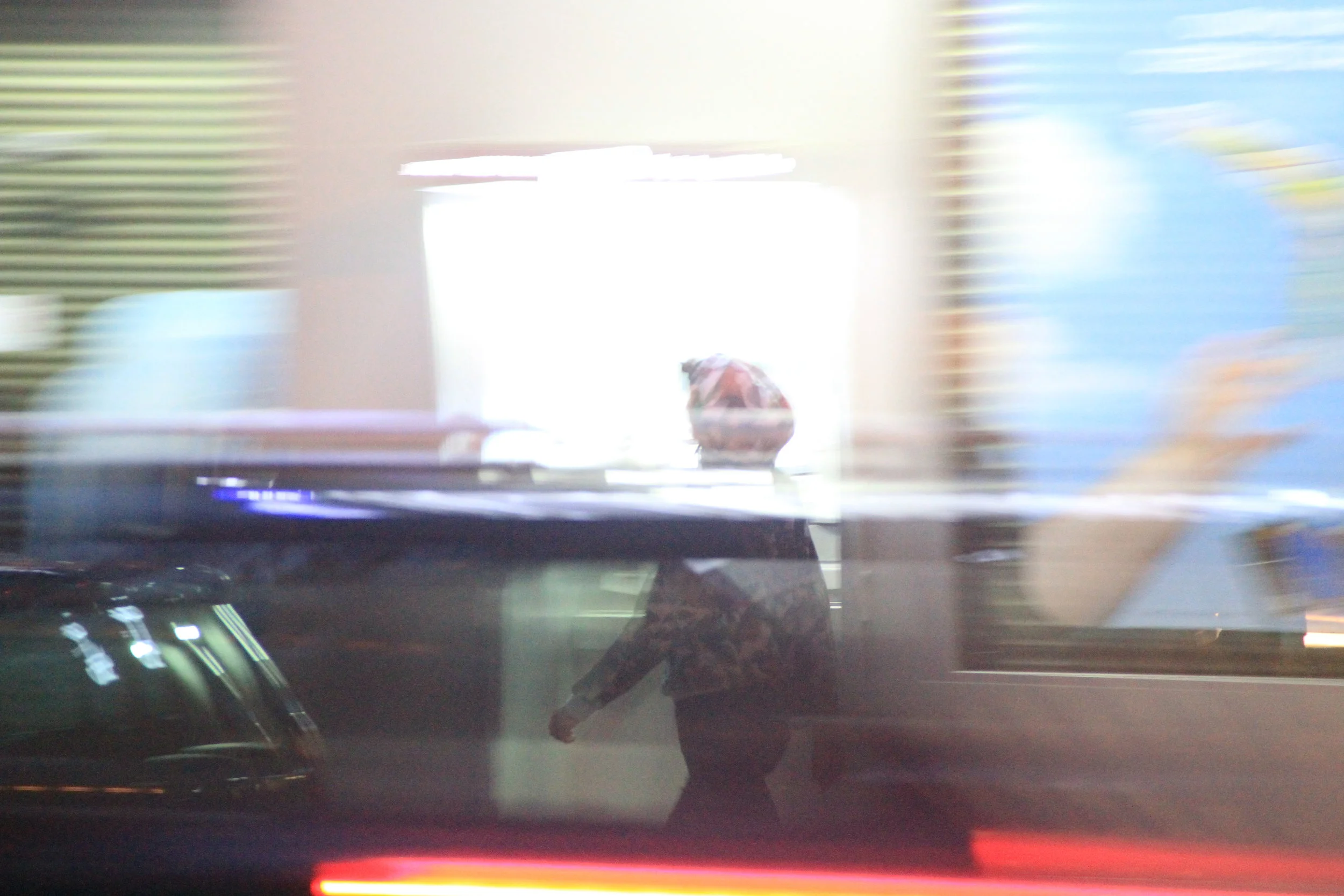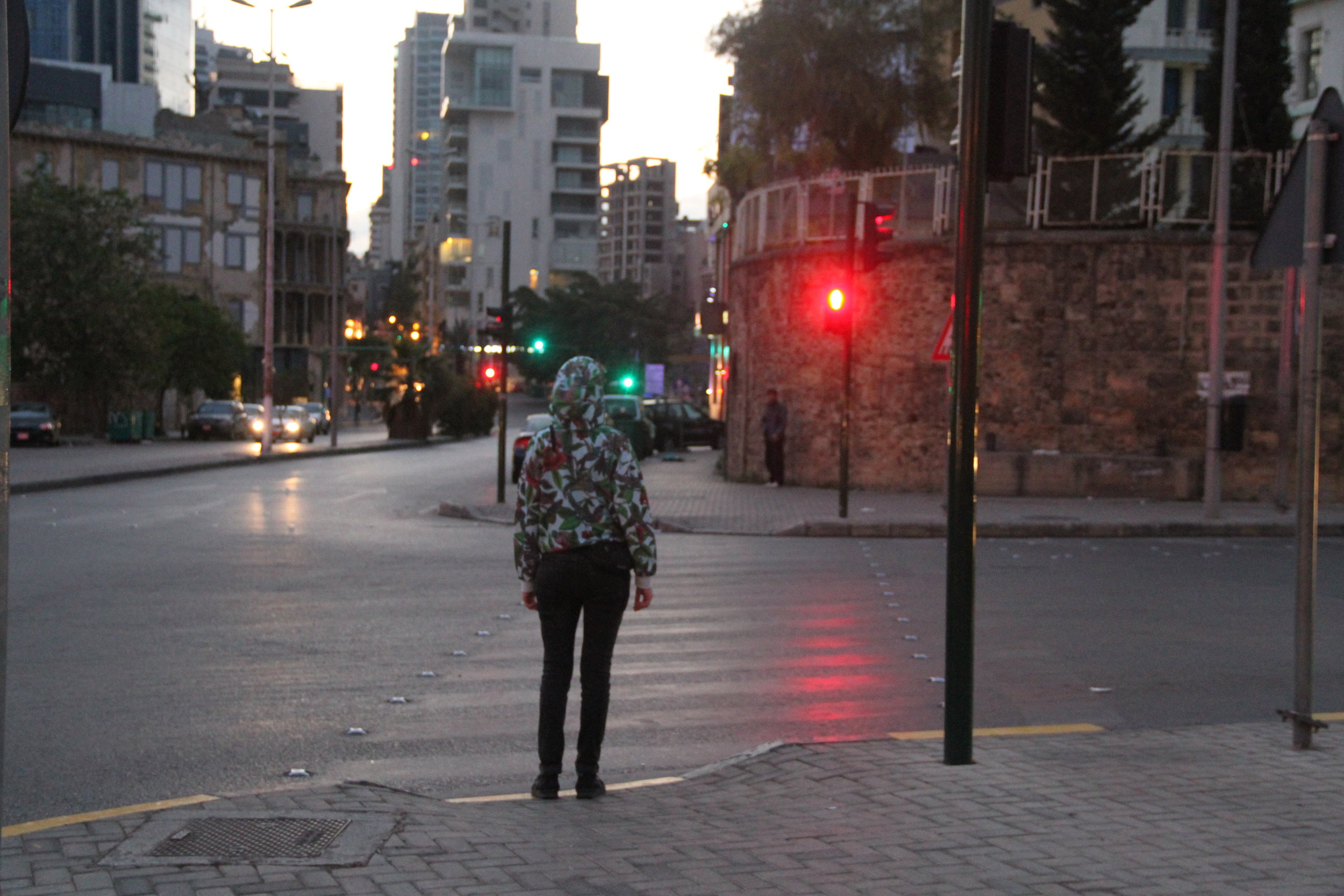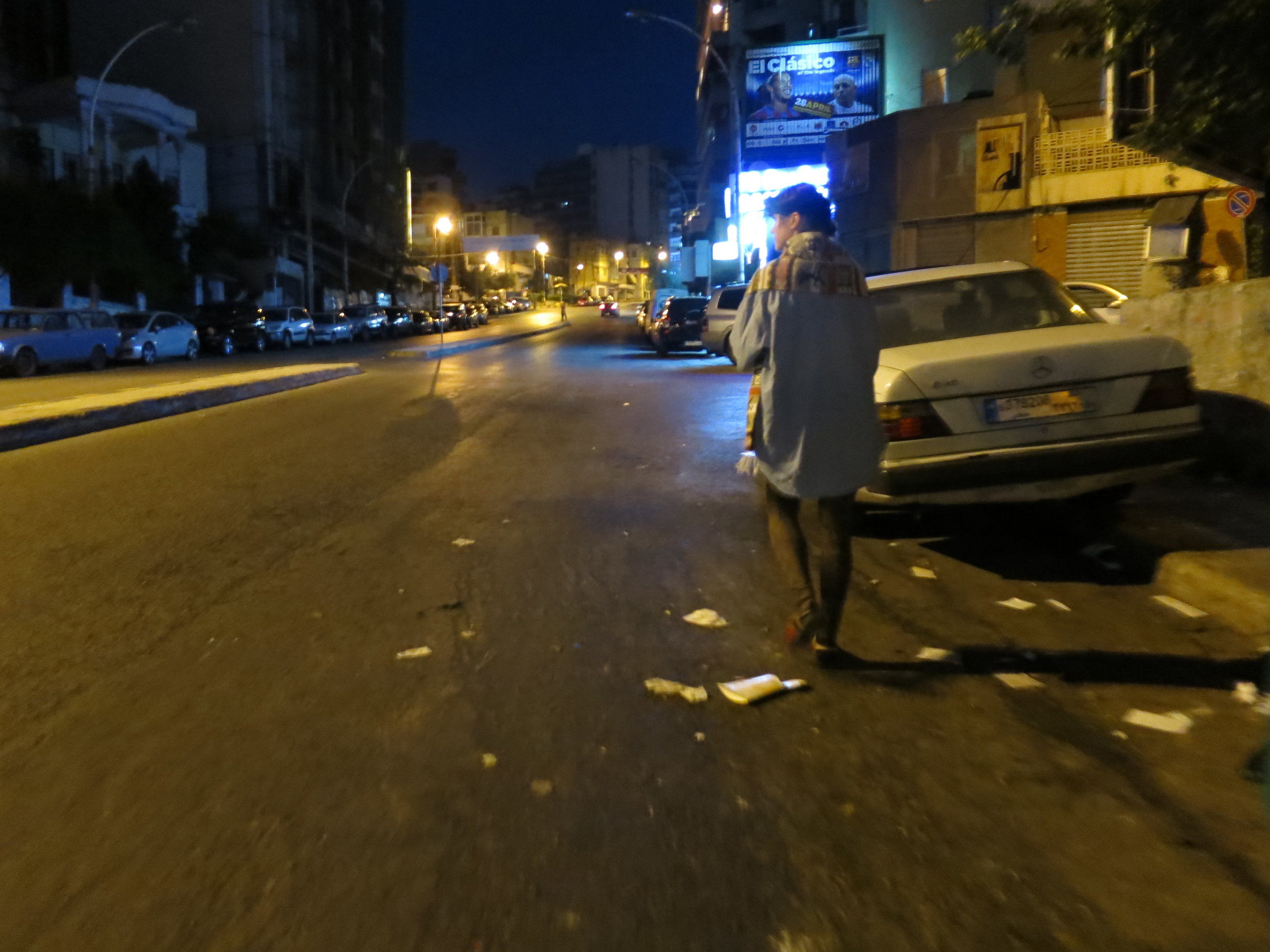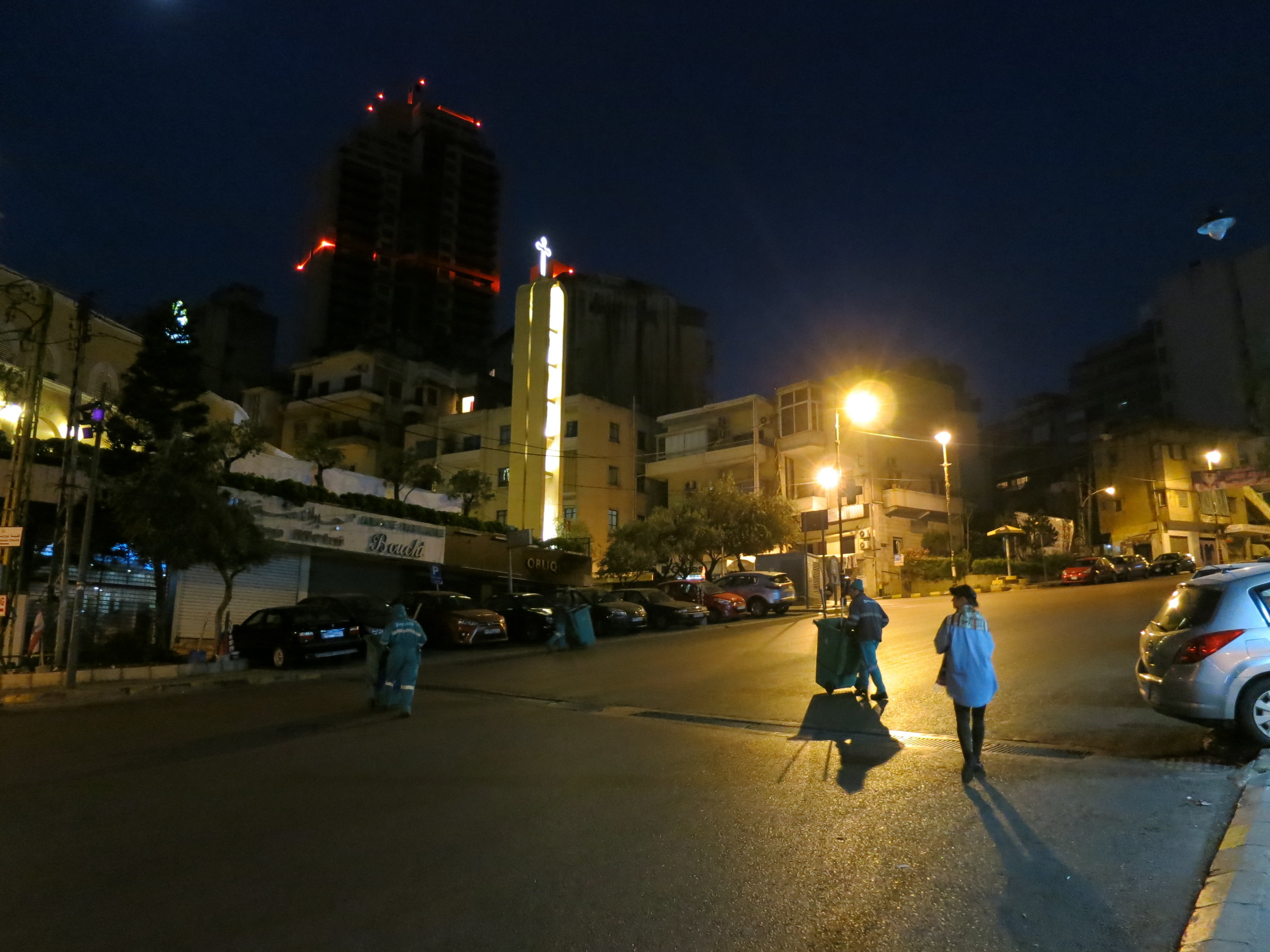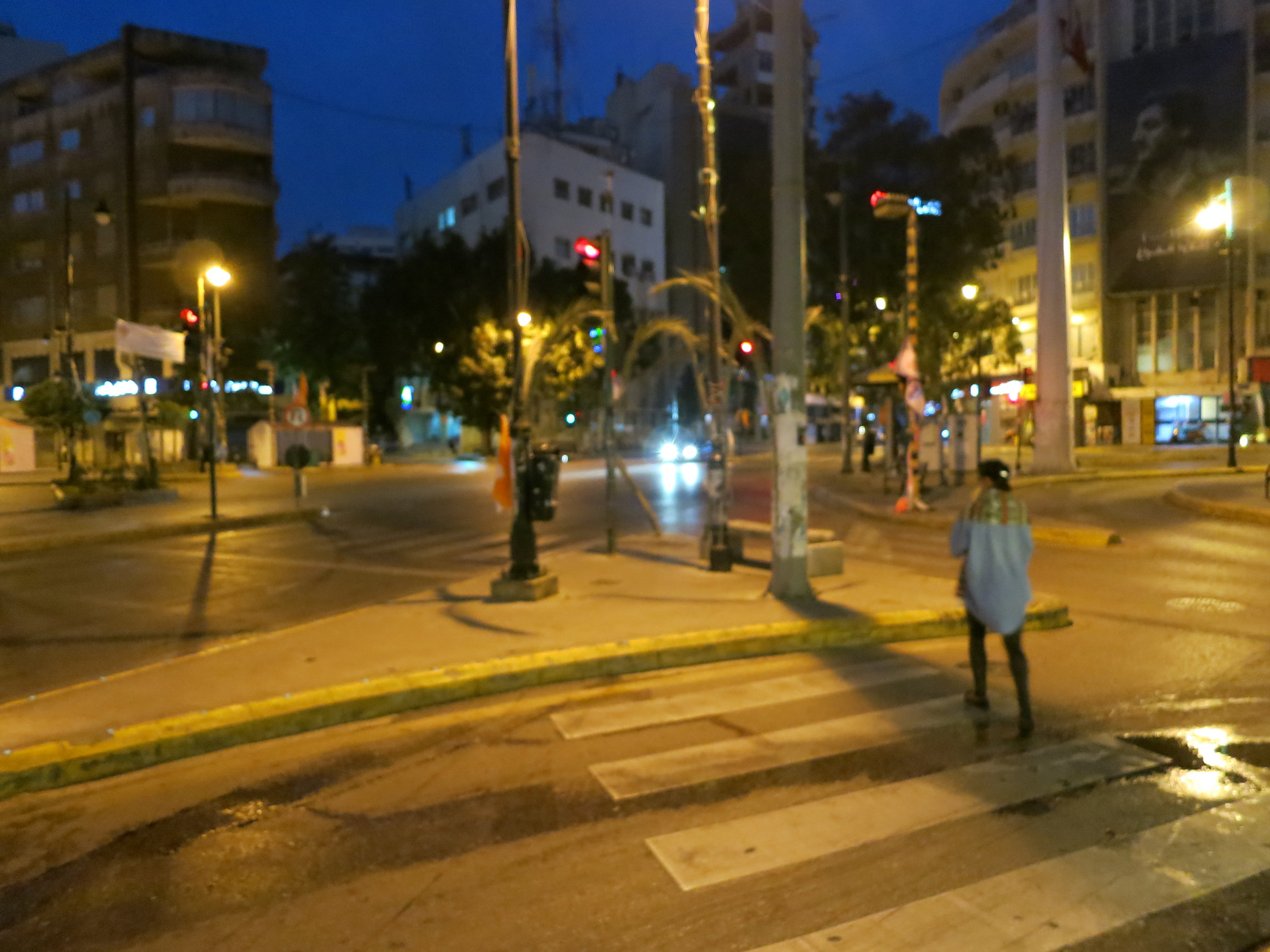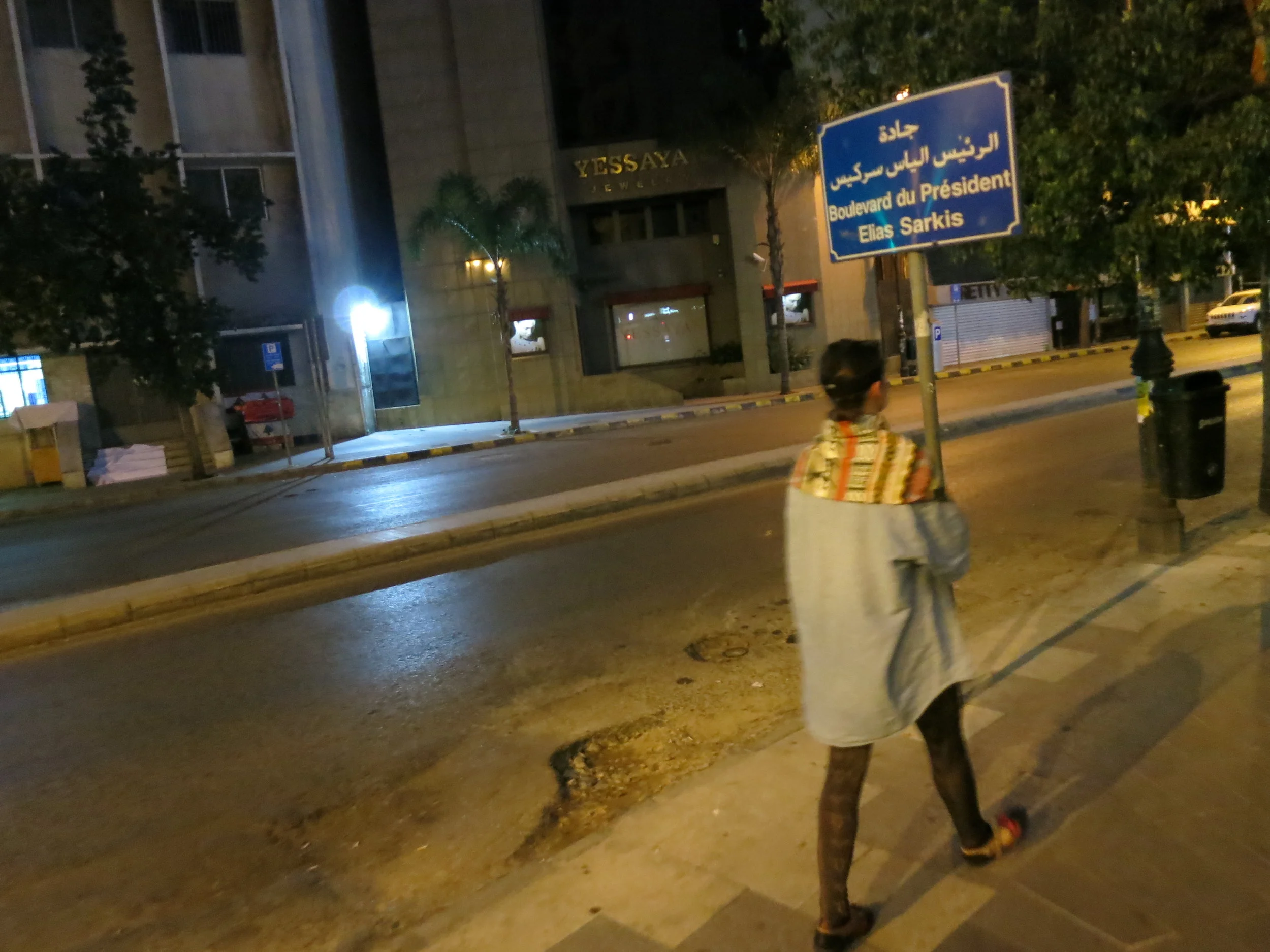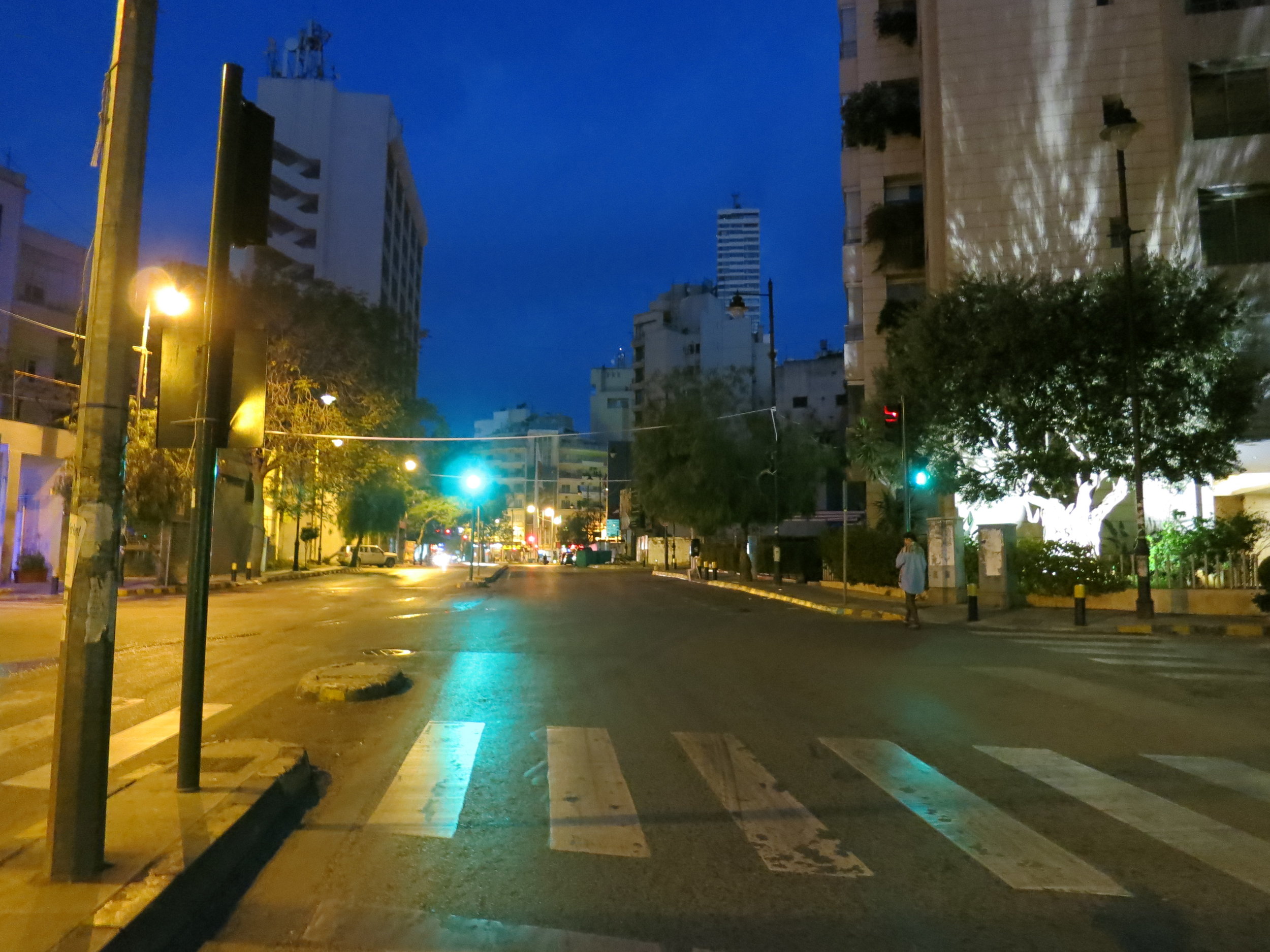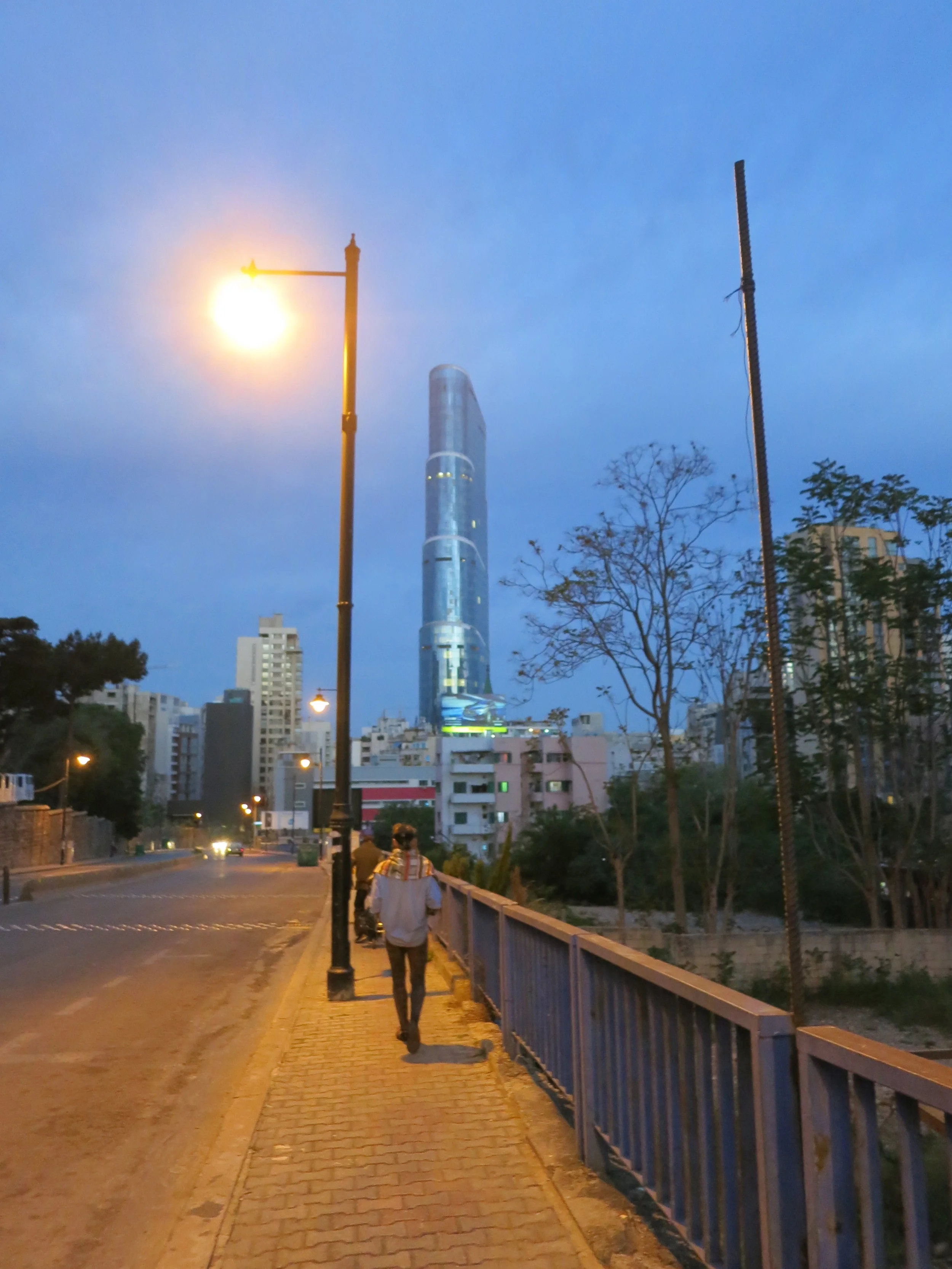Walking Borders, Two-channel video installation, in collaboration with the dancer Emilia Giudicelli, Beirut, Lebanon, 2017.
Sirine Fattouh and Elilia Giudicelli met in Beirut while Giudicelli was participating in an artist residency. During long walks through the city, their conversations often turned to the history and lasting impact of Lebanon’s successive wars. One day, Fattouh shared a vivid memory from her childhood: in 1988, at the age of eight, her family decided to cross from West to East Beirut in the midst of the civil war—an experience that marked the first time she ever saw the "other side" of the city.
That memory became the starting point for Walking Borders, a two-channel video installation in which the two artists retrace that symbolic crossing. Filming simultaneously, Elilia set out from East Beirut, and Fattouh from the West, with the intention of meeting near the Green Line, the former demarcation line during the war, close to Beit Beirut—the Yellow House, now a landmark of civil war memory.
But rather than converging at this historical site, they ended up meeting below Sama Beirut (literally "the sky of Beirut"), a sleek glass tower that, at the time, was one of the tallest buildings in the city. For younger generations, this tower has become a new emblem of Beirut: reflective, vertical, and disconnected from its layered past.
The installation presents the two journeys side by side, mapping not only geographic movement but also the emotional and historical distance that continues to define Beirut’s urban landscape. Through this dual perspective, Walking Borders reflects on separation, memory, urban transformation, and the difficulty of reconciliation in a fragmented city.


